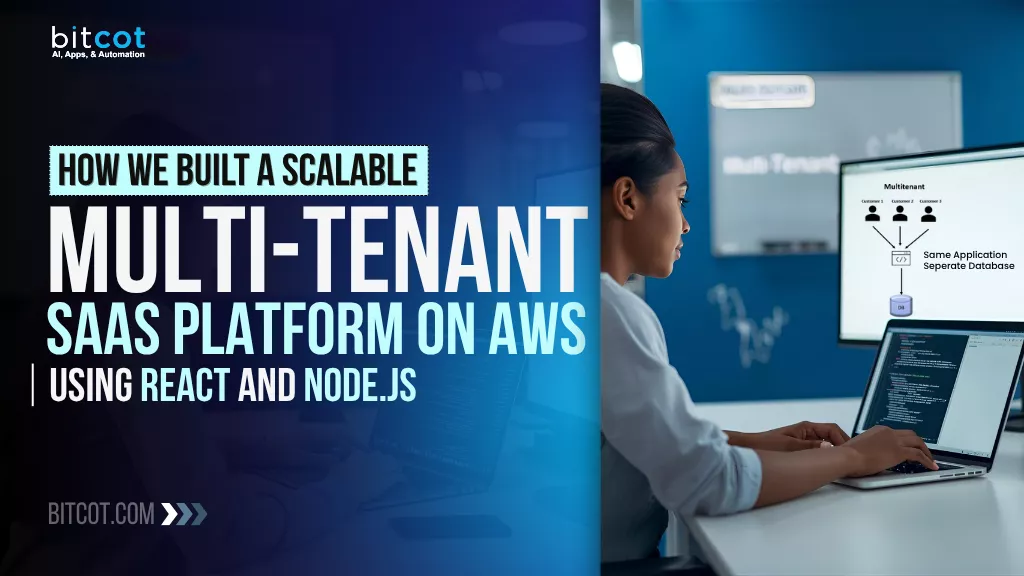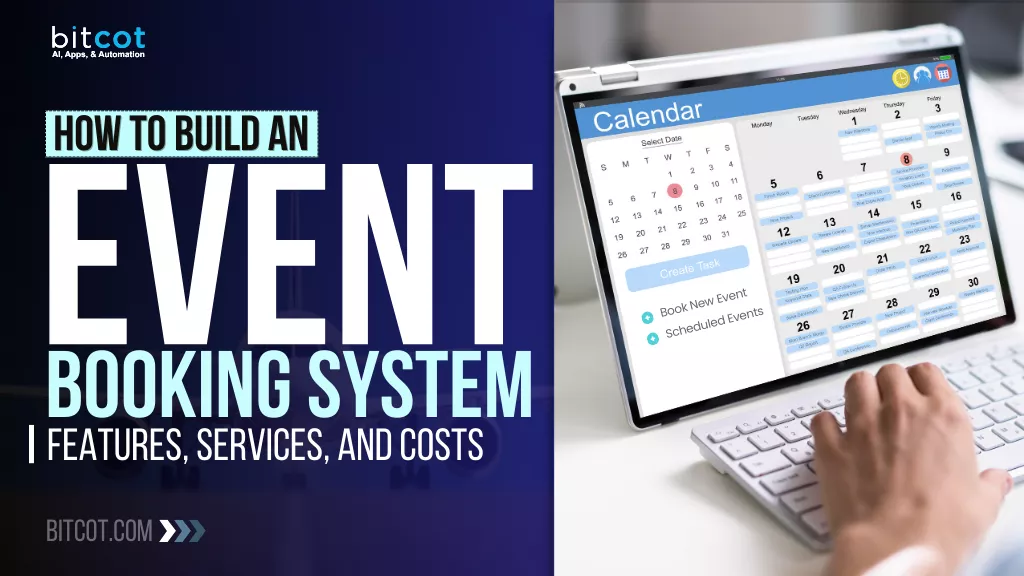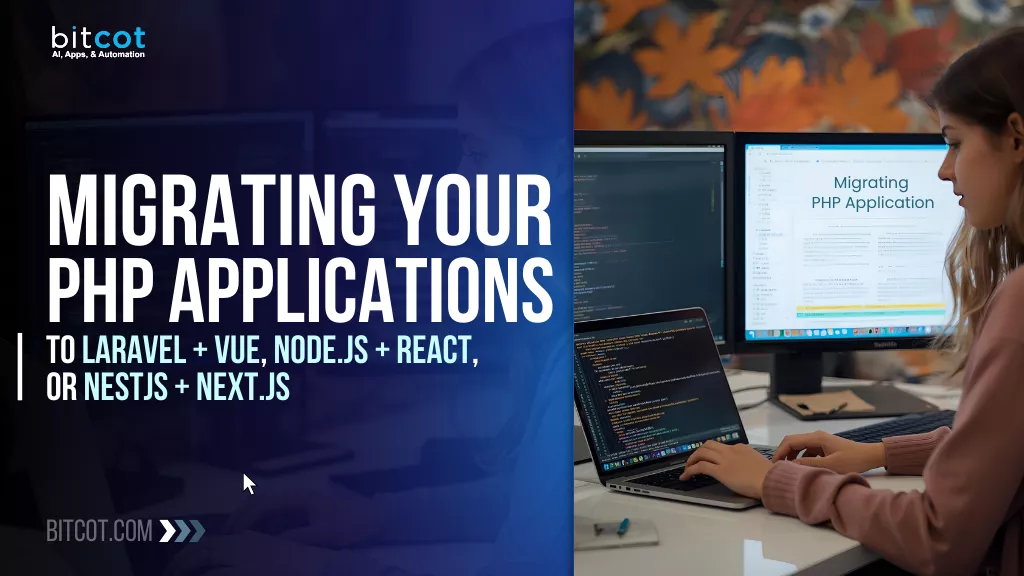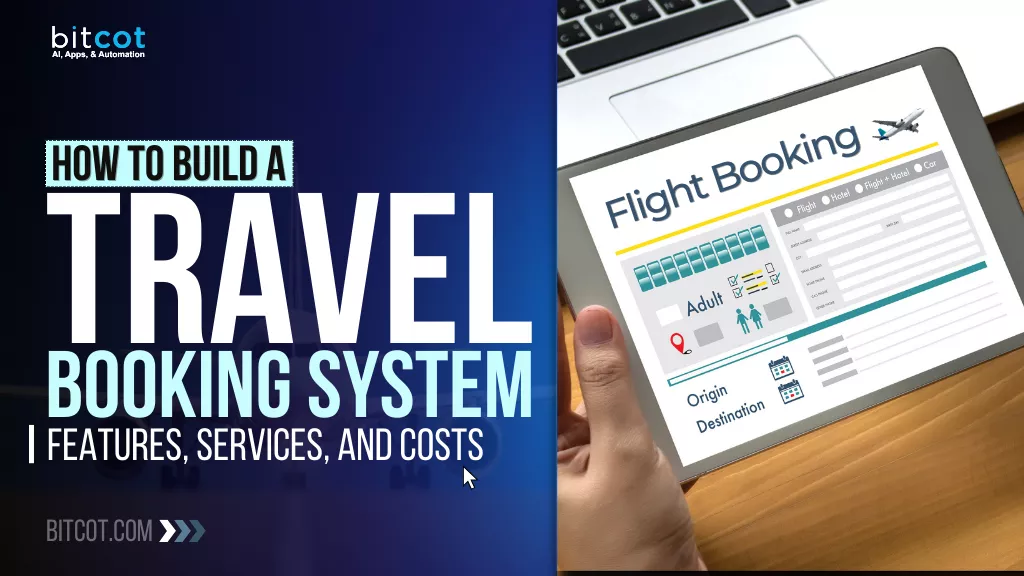
Your customers use your product every day, each with different needs, users, and data.
They all expect the same thing: speed, reliability, and a seamless experience that just works.
But as your customer base grows, your app starts to feel the strain. New tenants onboard. Databases grow. Custom requests pile up.
And suddenly, your once-simple system is juggling dozens of clients, each needing their own space, without slowing everyone else down.
Sound familiar?
This is the moment every SaaS business faces: when scaling stops being about features and starts being about SaaS architecture.
If your platform isn’t designed for multi-tenancy from the start, you’ll hit the wall fast: duplicate deployments, messy data isolation, endless maintenance headaches.
Today’s SaaS products need more than code that runs; they need cloud infrastructure that grows with every new customer.
In this post, we’ll walk you through how we at Bitcot approached this challenge, and how we built a proof of concept (POC) for a scalable multi-tenant SaaS platform using AWS, React, and Node.js.
You’ll see how we handled tenant isolation, automated onboarding with CI/CD pipelines, and dynamic frontend configuration, all without spinning up a separate instance per customer.
Ask yourself:
- How easily can your product onboard its next 50 customers?
- Can you roll out a new feature once or 50 times?
- How do you keep tenant data secure while sharing the same cloud infrastructure?
These are the real questions behind SaaS scalability.
Whether you’re an engineer designing microservices architecture, a founder planning growth, or a product manager mapping out the next release, this POC is for you.
At Bitcot, we’re constantly exploring practical, efficient ways to build B2B SaaS systems that scale beautifully, without adding complexity.
This is what we learned.
The future of SaaS is multi-tenant, cloud-native, and built for growth from day one. Are you ready to scale smarter?
Why Multi-Tenancy Matters for Growing SaaS Businesses
As your SaaS product gains traction, one thing becomes clear: every new customer shouldn’t mean a new deployment.
That model doesn’t scale. It eats up time, infrastructure, and developer hours.
Multi-tenancy changes that.
It allows multiple customers, or “tenants”, to use the same application and infrastructure, while keeping their data, users, and configurations completely separate through robust tenant isolation strategies.
The benefit? You serve hundreds of customers from a single, unified codebase.
That means:
- Lower operational costs: no need to maintain duplicate environments, reducing SaaS infrastructure costs significantly.
- Faster feature rollouts: deploy once through automated CI/CD pipelines, deliver to everyone.
- Consistent performance: the same reliability with elastic scaling, whether you have 10 users or 10,000.
- Simpler maintenance: one update, one version, one deployment pipeline.
But multi-tenancy isn’t just a technical decision; it’s a strategic growth advantage. It’s what allows SaaS companies to scale efficiently without scaling their infrastructure costs at the same rate, directly impacting key SaaS metrics like customer acquisition cost (CAC) and monthly recurring revenue (MRR).
At Bitcot, we see this as the foundation of long-term SaaS success. You can’t truly scale your business if your SaaS architecture can’t scale with it.
That’s why our POC focused on building a multi-tenant framework that proves how smart architecture can unlock growth, not just handle it.
In the next section, we’ll walk through how we approached this POC: the key goals, design principles, and the practical results we achieved using AWS cloud services, React, and Node.js
Building a Cloud-Native Multi-Tenant SaaS Platform: Our Approach
When we started this proof of concept, our goal wasn’t to build a full production platform; it was to prove that a scalable, multi-tenant architecture can be simple, efficient, and cost-effective from the start.
At Bitcot, we approach every project with a “start small, scale fast” mindset. This POC was no different.
We focused on three core objectives:
- Simplify tenant provisioning: New tenants should be able to join instantly, with no manual setup.
- Ensure data isolation: Every customer’s data must remain secure and completely separate using proven database isolation strategies.
- Enable rapid scaling: The system should grow effortlessly with cloud scalability as new tenants come on board.
To achieve that, we combined technologies we know work well together: AWS for cloud-native infrastructure, Node.js with microservices architecture for backend logic, and React for a flexible, responsive frontend.
Rather than over-engineering, we prioritized automation through CI/CD pipelines and flexibility with white-label capabilities.
Our POC automatically provisions new tenants, configures their environment through an API gateway, and customizes their experience, all from one centralized system supporting SSO and OAuth authentication.
This approach helped us validate what every B2B SaaS business wants to know:
- Can we onboard new customers without spinning up new infrastructure?
- Can we scale to hundreds of tenants without losing speed or control?
- Can we maintain a single product while offering a personalized, white-label experience for every client?
The answer, through this POC, was a clear yes.
By focusing on smart SaaS architecture patterns, we built a foundation that can handle rapid growth, support diverse client needs, and minimize operational overhead.
In the next section, we’ll break down how we designed the architecture and what that means for SaaS businesses looking to scale
The Architecture Behind Our Scalable Multi-Tenant SaaS Application
Scalable software isn’t just about writing efficient code; it’s about designing the right foundation with proper SaaS architecture patterns.
When we built this proof of concept at Bitcot, our goal was to show how a SaaS platform can serve many customers at once, securely and efficiently, without multiplying infrastructure or complexity.
Think of it as one powerful engine driving multiple cars, each with its own driver, dashboard, and destination.
That’s the essence of multi-tenancy.
Here’s how we approached it:
All tenants share the same application framework, built on a microservices architecture for better scalability and maintainability. The same backend logic, RESTful APIs, and cloud infrastructure serve every customer.
But each tenant has its own data, settings, and branding managed through our API gateway that handles intelligent tenant routing and API rate limiting.
This means every customer experiences the product as their own white-label solution, while the business maintains a single, streamlined platform.
2. Automated Tenant Provisioning with CI/CD
We built an automated tenant provisioning process using containerization with Docker and AWS ECS that creates a new tenant environment in minutes, not hours or days.
Once a new client signs up, the CI/CD pipeline automatically:
- Sets up their data space with database sharding for optimal performance
- Applies default configurations through Infrastructure as Code
- Loads their branding and preferences for white-label customization
- Configures SSO and OAuth authentication endpoints
No manual intervention. No duplicated deployments. Just instant scalability with serverless functions handling the orchestration.
3. Secure Data Isolation with Multi-Tenant Database Design
Security and privacy were non-negotiable. We implemented a hybrid multi-tenant database design combining schema isolation for larger tenants and a shared database with row-level security for smaller ones.
Each tenant’s data is stored separately with strict access controls, encryption at rest and in transit, ensuring no overlap or exposure while maintaining SaaS security best practices.
This structure allows one customer’s activity or growth to never impact another, a must for enterprise-level B2B SaaS platforms requiring compliance with SOC 2 and GDPR standards.
4. Cloud-Native Efficiency with AWS Services
By leveraging AWS services like:
- Amazon RDS with read replicas for database performance
- AWS ECS with Fargate for containerization and elastic scaling
- Amazon CloudFront CDN for global content delivery
- AWS Lambda for serverless background processing
- API Gateway for intelligent request routing and load balancing
- AWS CloudWatch for monitoring and observability
The platform can scale up or down based on real-time demand. This means lower costs during quiet periods and seamless performance during spikes, an essential balance for growing SaaS businesses, optimizing their infrastructure costs.
5. Performance Optimization and Load Balancing
We implemented Application Load Balancing (ALB) to distribute traffic efficiently across multiple availability zones, ensuring high availability and fault tolerance. Combined with CloudFront CDN, our platform delivers sub-second response times globally while handling thousands of concurrent users.
This architecture is more than just a technical design; it’s a scaling strategy. It ensures you can grow your user base, onboard new clients, and expand globally without rebuilding your product each time.
For SaaS founders and product leaders, that’s the key to faster growth, better margins, improved SaaS metrics, and a stronger customer experience.
In the next section, we’ll share what we learned through this POC, the insights that shaped our approach, and how they can guide your next phase of scaling.
Benefits of Using React and Node.js for a Scalable SaaS Platform
Choosing the right technology stack isn’t just a developer decision; it’s a business decision. It affects how fast you can innovate, how efficiently you can scale, and how reliably you can deliver a consistent experience to every customer.
For this POC, we chose React on the frontend and Node.js with microservices on the backend, and that combination proved to be both powerful and practical for modern SaaS development.
Here’s why.
1. Faster Development, Faster Iteration with Modern SaaS Development
React and Node.js share one major advantage: speed. Both are JavaScript-based, which means frontend and backend teams work in the same language. That translates into faster development cycles, easier collaboration with version control, and quicker turnaround times for new features or fixes through streamlined CI/CD pipelines.
In a SaaS model where time-to-market can define your competitive edge, this shared language ecosystem becomes a real differentiator for B2B SaaS products.
2. Seamless Scalability with Microservices Architecture
Node.js is built for handling high volumes of concurrent requests with its non-blocking, event-driven architecture, perfect for SaaS platforms serving multiple tenants simultaneously through RESTful APIs. Its lightweight nature ensures consistent performance with elastic scaling, even as user numbers grow.
Our microservices architecture, powered by Node.js and containerized with Docker, allows independent scaling of specific services based on demand, optimizing cloud infrastructure costs.
On the frontend, React efficiently updates only what changes on the screen using its virtual DOM, creating a smooth, responsive experience regardless of how large or dynamic the application becomes.
Together, they allow you to scale both horizontally (adding more users through load balancing) and vertically (adding more features) without sacrificing performance.
3. Dynamic Personalization and White-Label Capabilities
For a multi-tenant SaaS product, personalization is key; each customer expects their own look, feel, and configuration. React makes this simple through its component-based structure, enabling true white-label SaaS experiences.
We can load tenant-specific branding, themes, custom domain configurations, and settings instantly through our API gateway without rebuilds or downtime.
This flexibility turns one platform into many branded experiences, a major value driver for businesses serving diverse B2B SaaS clients who need their own branded portals.
4. Cost Efficiency and Maintainability in SaaS Development
With Node.js powering the backend microservices and React on the frontend, we maintain a single, modern JavaScript ecosystem. That means fewer moving parts, easier maintenance through standardized CI/CD pipelines, and smaller teams managing more efficiently.
From a business perspective, this reduces long-term SaaS infrastructure costs, simplifies hiring with a unified skill set, and future-proofs the product against technology silos.
5. Backed by a Global Ecosystem and Best Practices
Both React and Node.js are supported by huge open-source communities and a rich ecosystem of tools, plugins, and frameworks for building scalable SaaS applications.
This ensures faster problem-solving, continuous innovation with the latest SaaS security best practices, and long-term stability, critical factors for SaaS companies that need to evolve quickly without technical dead ends.
The ecosystem includes excellent support for essential features like:
- OAuth and SSO integration for enterprise authentication
- Database drivers for various multi-tenant database designs
- Monitoring and observability tools
- Serverless deployment options with AWS Lambda
- Container orchestration with ECS and Kubernetes
6. API-First Development for Integration
Node.js excels at building robust RESTful APIs and GraphQL endpoints, essential for modern B2B SaaS platforms that need to integrate with third-party services, offer public APIs to customers, and support mobile applications alongside web interfaces.
In short, React and Node.js help SaaS businesses build faster, smarter, and more scalable products without compromising quality or user experience.
For our POC at Bitcot, these technologies gave us the flexibility to prove that a single, well-designed platform can deliver customized, high-performance white-label experiences for every tenant.
In the next section, we’ll look at the business outcomes of this approach, what this SaaS architecture enables, and how it sets the stage for future SaaS growth
Business Impact of Our Scalable Multi-Tenant SaaS Platform
Technology only matters if it drives real business outcomes and improves key SaaS metrics.
When we set out to build this proof of concept, our goal wasn’t just to prove that multi-tenancy works; it was to show how the right SaaS architecture can unlock growth, efficiency, and customer satisfaction at scale while reducing customer acquisition cost (CAC).
Here’s what this approach makes possible for modern B2B SaaS businesses.
1. Faster Customer Onboarding and Improved Time-to-Value
With automated tenant provisioning through our CI/CD pipeline, new customers can be onboarded in minutes instead of days.
No manual environment setup. No waiting for deployments. SSO and OAuth authentication are configured automatically.
This means you can scale your customer base instantly, whether you’re adding ten new startups or a single enterprise client with white-label requirements.
Faster onboarding doesn’t just improve operations; it improves revenue velocity and monthly recurring revenue (MRR). The quicker your customers go live, the faster your business grows and the better your SaaS metrics look.
2. Lower Infrastructure and Maintenance Costs
By hosting multiple tenants on a shared platform with microservices architecture and containerization, you maximize efficiency without compromising security. There’s no need to duplicate servers, databases, or deployments for each client.
Our cloud-native approach with elastic scaling and serverless functions means you only pay for what you use, optimizing SaaS infrastructure costs.
That translates to significantly lower cloud and maintenance costs, often 60-70% less than single-tenant deployments, freeing up budget for innovation, not upkeep. This directly impacts your gross margins and overall profitability.
3. Easier Feature Rollouts with CI/CD Automation
Because all tenants share the same codebase, updates and new features can be deployed once through automated CI/CD pipelines and delivered instantly to every customer.
No fragmented versions. No long rollout cycles. No compatibility issues.
This consistency improves quality, reduces support issues, and lets you move faster than competitors with more complex infrastructure while maintaining SaaS security best practices.
4. Consistent Performance at Scale with Load Balancing
The AWS-native foundation with Application Load Balancing, CloudFront CDN, and database sharding ensures that the platform scales automatically with demand through elastic scaling.
As your user base grows, the system can handle more traffic, more data, and more API requests, all without manual scaling or costly over-provisioning.
The result? A smooth, reliable experience with sub-second response times for every tenant, every time, is a critical factor in reducing churn and improving customer lifetime value.
5. Stronger Security and Compliance for Enterprise B2B SaaS
Data isolation between tenants using schema isolation and row-level security means each customer’s information is completely protected, a must-have for industries like finance, healthcare, and enterprise B2B SaaS.
With AWS’s compliance-ready services, OAuth/SSO authentication, and implementation of SaaS security best practices, the architecture supports:
- SOC 2 Type II compliance
- GDPR data protection requirements
- HIPAA for healthcare applications
- ISO 27001 standards
This enterprise-grade security posture opens doors to larger contracts and higher-value customers, directly impacting your average contract value (ACV).
6. White-Label Capabilities for Market Expansion
The platform’s white-label capabilities allow you to serve different market segments, create partner programs, and offer reseller opportunities without building separate products.
This flexibility accelerates market expansion and creates new revenue streams while maintaining a single, manageable codebase.
7. Long-Term Agility and Reduced Technical Debt
Perhaps the most important outcome is flexibility.
This SaaS architecture with microservices and containerization gives SaaS companies the freedom to:
- Experiment with new features using serverless functions
- Expand to new markets with CDN support
- Integrate with third-party services through RESTful APIs
- Evolve their product without rebuilding their foundation
It’s scalable, sustainable, and ready to grow as your business does, all while keeping technical debt minimal through modern development practices and cloud-native design patterns.
At Bitcot, this POC proved that scalability doesn’t have to come with complexity. With the right multi-tenant database design, tenant isolation strategies, and cloud infrastructure, a SaaS business can grow faster, reduce operational overhead, and deliver a premium experience to every customer, from startup to enterprise.
Partner with Bitcot to Build Your Custom Multi-Tenant SaaS Application
Scalability isn’t just a technical goal; it’s a growth strategy that impacts your SaaS metrics and long-term success.
The right SaaS architecture can transform how you deliver value, how fast you grow, and how efficiently your business operates.
At Bitcot, we specialize in outsourcing SaaS development for companies that want to scale without the overhead of building large in-house teams. We help you turn that vision into reality
Whether you’re building a new B2B SaaS product from the ground up or modernizing an existing one to support multi-tenancy, our team designs and develops custom multi-tenant platforms that are secure, cost-efficient, and built to scale with cloud-native technologies.
We bring together deep expertise in cloud architecture, microservices design, containerization, and modern development frameworks to help you:
- Launch faster with automated tenant provisioning, CI/CD pipelines, and OAuth/SSO integration
- Scale confidently with AWS-powered infrastructure, elastic scaling, load balancing, and performance optimization
- Personalize user experiences with white-label capabilities for every customer without managing multiple codebases
- Implement robust tenant isolation strategies using proven multi-tenant database designs and schema isolation
- Reduce long-term SaaS infrastructure costs while increasing agility and reliability through serverless architectures
- Build secure, compliant platforms following SaaS security best practices and industry standards
Every business is unique; your SaaS platform should be too.
Our proof of concept demonstrates what’s possible when thoughtful design meets practical engineering using microservices architecture, API gateways, and cloud scalability. Now, we’re helping our clients apply these same principles to their own products, building platforms that grow with them, not against them.
If you’re ready to scale smarter, streamline operations with CI/CD automation, and deliver a consistent, high-quality white-label experience to every customer while improving your SaaS metrics, Bitcot can help you get there.
Final Thoughts
Building a scalable SaaS platform with proper multi-tenant architecture isn’t easy, and honestly, it’s not supposed to be.
Every growing business reaches that point where the systems that once worked start to strain under new customers, new demands, and new possibilities. It’s a good problem to have; it means your product is working.
But scaling smartly with the right SaaS architecture patterns is what separates SaaS products that thrive from those that stall.
That’s exactly why we built this POC: to prove that growth doesn’t have to mean chaos. With the right architecture, automation through CI/CD pipelines, cloud-native design, microservices, containerization, and tools, you can keep your platform lean, your SaaS infrastructure costs optimized, your customers happy, and your team focused on innovation instead of firefighting.
At Bitcot, we’ve seen this transformation firsthand. Companies that start small, validate their multi-tenant database design and tenant isolation strategies early, and invest in scalable SaaS development end up moving faster and spending less in the long run while maintaining better SaaS metrics.
If you’re planning to scale your B2B SaaS business or looking to modernize your existing platform with white-label capabilities, elastic scaling, and robust SaaS security best practices, now is the perfect time to think long-term.
Let’s make sure your system is ready for what’s next.
Our team specializes in custom SaaS application development services that help you build flexible, high-performing platforms designed for growth. We’ll help you turn your vision into a scalable, cloud-native, future-ready product with proper API gateway integration, load balancing, and serverless architecture that your customers will love, and your team will love managing.
Get in touch with us.












